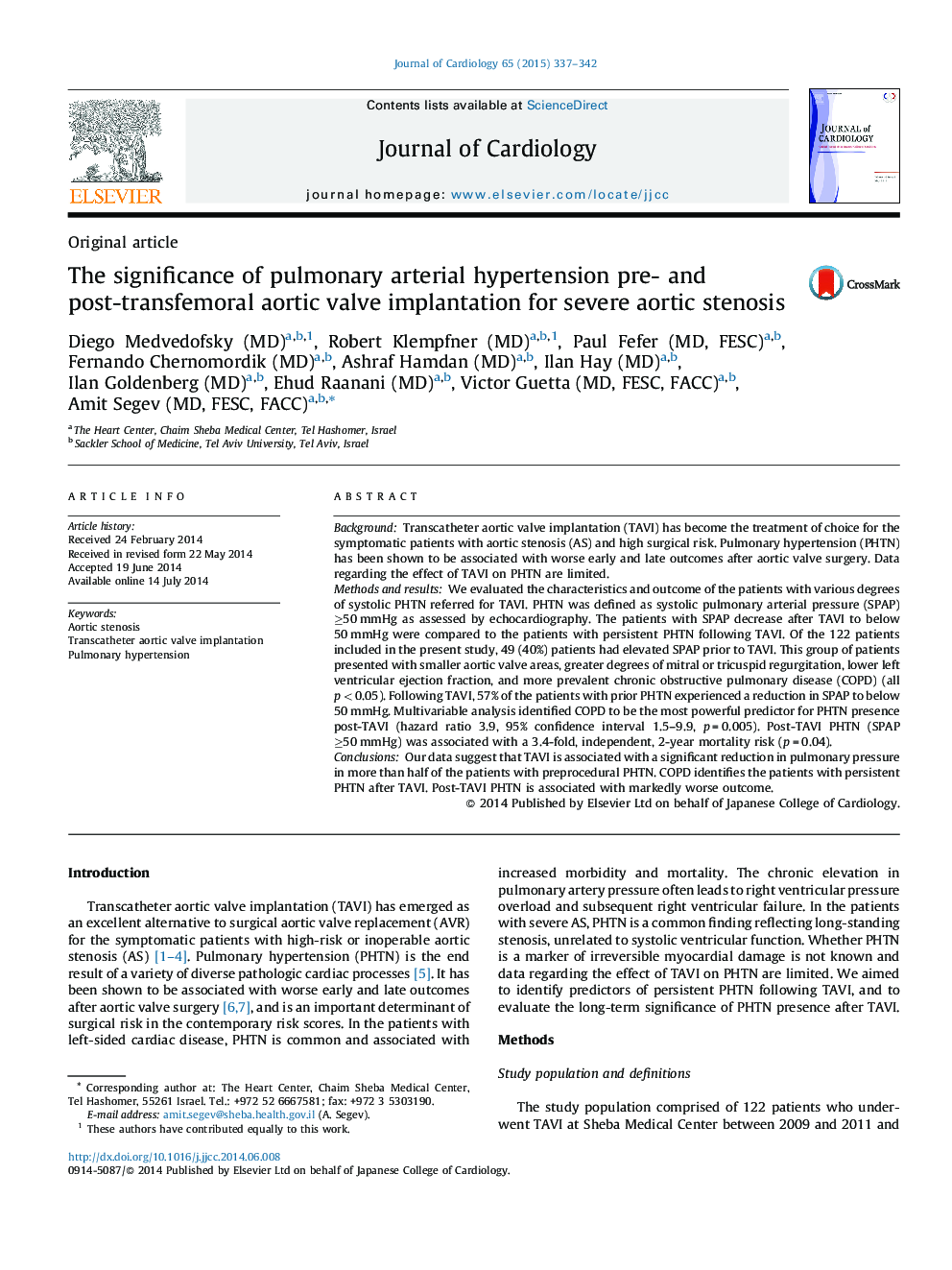| Article ID | Journal | Published Year | Pages | File Type |
|---|---|---|---|---|
| 2963072 | Journal of Cardiology | 2015 | 6 Pages |
BackgroundTranscatheter aortic valve implantation (TAVI) has become the treatment of choice for the symptomatic patients with aortic stenosis (AS) and high surgical risk. Pulmonary hypertension (PHTN) has been shown to be associated with worse early and late outcomes after aortic valve surgery. Data regarding the effect of TAVI on PHTN are limited.Methods and resultsWe evaluated the characteristics and outcome of the patients with various degrees of systolic PHTN referred for TAVI. PHTN was defined as systolic pulmonary arterial pressure (SPAP) ≥50 mmHg as assessed by echocardiography. The patients with SPAP decrease after TAVI to below 50 mmHg were compared to the patients with persistent PHTN following TAVI. Of the 122 patients included in the present study, 49 (40%) patients had elevated SPAP prior to TAVI. This group of patients presented with smaller aortic valve areas, greater degrees of mitral or tricuspid regurgitation, lower left ventricular ejection fraction, and more prevalent chronic obstructive pulmonary disease (COPD) (all p < 0.05). Following TAVI, 57% of the patients with prior PHTN experienced a reduction in SPAP to below 50 mmHg. Multivariable analysis identified COPD to be the most powerful predictor for PHTN presence post-TAVI (hazard ratio 3.9, 95% confidence interval 1.5–9.9, p = 0.005). Post-TAVI PHTN (SPAP ≥50 mmHg) was associated with a 3.4-fold, independent, 2-year mortality risk (p = 0.04).ConclusionsOur data suggest that TAVI is associated with a significant reduction in pulmonary pressure in more than half of the patients with preprocedural PHTN. COPD identifies the patients with persistent PHTN after TAVI. Post-TAVI PHTN is associated with markedly worse outcome.
